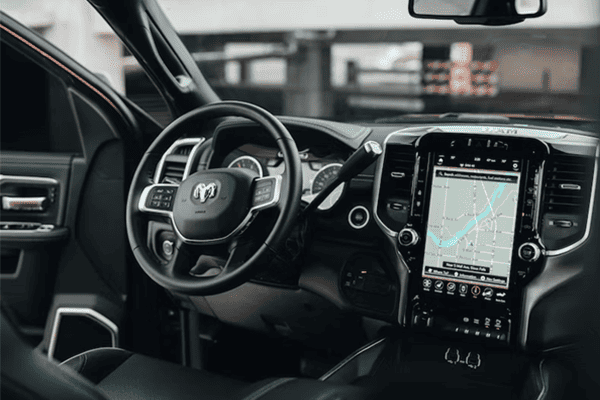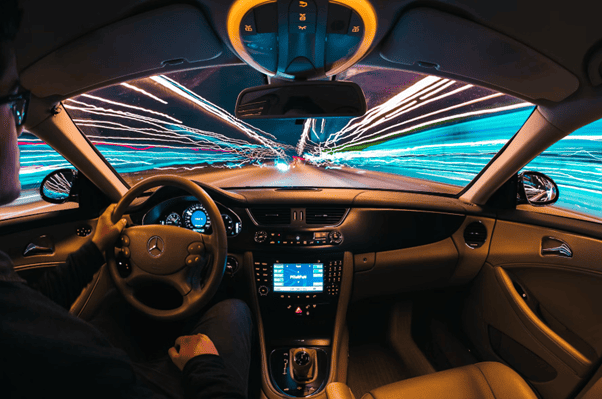
In many situations, renting a car is the most convenient option. The main thing is to choose the right car for rent that suits your occasion and event. When travelling to hot countries for vacation or work, exotic car rentals will be a great option. You may find great cars for rent at the Dubai rental car company, and besides, they do not require you to leave a deposit. You can use sports car rental Dubai and enjoy your ride in air-conditioned comfort.
Table of Contents
Rental cars have come a long way from simple cars with basic features to complex cars with advanced technology. These improvements have not only improved the driving experience for customers, but have also improved safety, efficiency and overall convenience.
In this article, we will explore the various technologies used in rental cars, giving us a glimpse into the exciting future of the automotive industry.
Keyless Entry and Start Systems
One of the most convenient features of modern rental cars is the keyless entry and start system.
Keyless entry in a car is a system that provides the car with the necessary security using a digital smart key that interacts directly with the installed system. Using proximity sensors, this technology unlocks the doors and prepares the car for ignition.
This system uses enhanced encryption methods, which greatly increases the level of security.
Infotainment Systems
Infotainment systems have revolutionised the driving experience by combining entertainment, navigation, and connectivity features into one central unit. These systems typically consist of a touchscreen display with user-friendly interfaces, enabling drivers to access music, make hands-free calls, get real-time traffic updates, and use GPS navigation. Some advanced infotainment systems also support smartphone integration, allowing drivers to use popular apps like Google Maps or Spotify on the car’s display.
GPS Navigation
While GPS navigation is often part of the infotainment system, it deserves a separate mention due to its significant impact on the rental car industry. With GPS navigation, drivers can explore unfamiliar territories with confidence, as it provides turn-by-turn directions and points of interest along the way. This technology not only enhances the driving experience for customers but also reduces the chances of getting lost, leading to increased customer satisfaction and loyalty.

Advanced Driver Assistance Systems (ADAS)
In the automobile sector, safety has always come first, and this is also true of rental cars. Advanced Driver Assistance Systems (ADAS) monitor the environment around the vehicle and work with the driver to help prevent accidents. Some common ADAS features include:
- Autonomous Cruise Control (ACC)
ACC employs radar or cameras to keep a safe distance from the automobile in front while automatically changing the speed of the vehicle to keep up with traffic. This feature lessens driver tiredness on lengthy trips and improves highway safety.
- LDW (Lane Departure Warning) and LKA (Lane Keeping Assist)
They inform the driver when the car inadvertently drifts out of its lane, while LKA actively directs the vehicle back into its proper lane. These characteristics aid in preventing accidents brought on by drowsy or distracted driving.
- Blind-Spot Monitoring (BSM)
BSM uses sensors to detect vehicles in the car’s blind spots and warns the driver through visual or audible alerts. This technology improves safety during lane changes, especially in busy traffic conditions.
- Automatic Emergency Braking (AEB)
AEB applies the brakes automatically when it detects an imminent collision, helping reduce the severity of accidents or even avoiding them altogether.
Modernised Vehicle Connections
The proliferation of the Internet of Things (IoT) has made automotive connectivity a common feature in rental cars. The car can connect with other equipment, the infrastructure, and even other vehicles thanks to this technology. Among the uses for cutting-edge automotive communication are:
- V2V (Vehicle to Vehicle) Communication
With V2V technology, cars may communicate with nearby vehicles to exchange data such as speed and location. This can greatly improve traffic flow and accident prevention.
- Vehicle-to-Infrastructure (V2I) Communication
V2I communication allows vehicles to communicate with traffic lights, road signs, and other infrastructure elements. This can provide drivers with real-time traffic information and optimise traffic signal timings for smoother journeys.
Wi-Fi Hotspots
Many modern rental cars offer built-in Wi-Fi hotspots, keeping passengers connected during their travels. This feature is especially popular among road trip enthusiasts and business travellers.
Remote Vehicle Control
Some rental car companies have introduced remote vehicle control technology, allowing customers to access certain car features through smartphone apps. For example, drivers can lock or unlock the doors, start the engine, or even adjust the climate control before entering the vehicle. This level of convenience enhances the overall rental experience, making it more seamless and efficient.
Conclusion
The technologies used in rental cars have undoubtedly transformed the way we travel and experience driving. From keyless entry and infotainment systems to advanced safety features and electric propulsion, these innovations have made rental cars safer, more efficient, and more enjoyable for customers. As technology continues to advance, we can expect further integration of smart features and autonomous driving capabilities, paving the way for an exciting and connected future in the rental car industry.
https://unsplash.com/photos/pWGUMQSWBwI
https://unsplash.com/photos/MyjVReZ5GLQ

